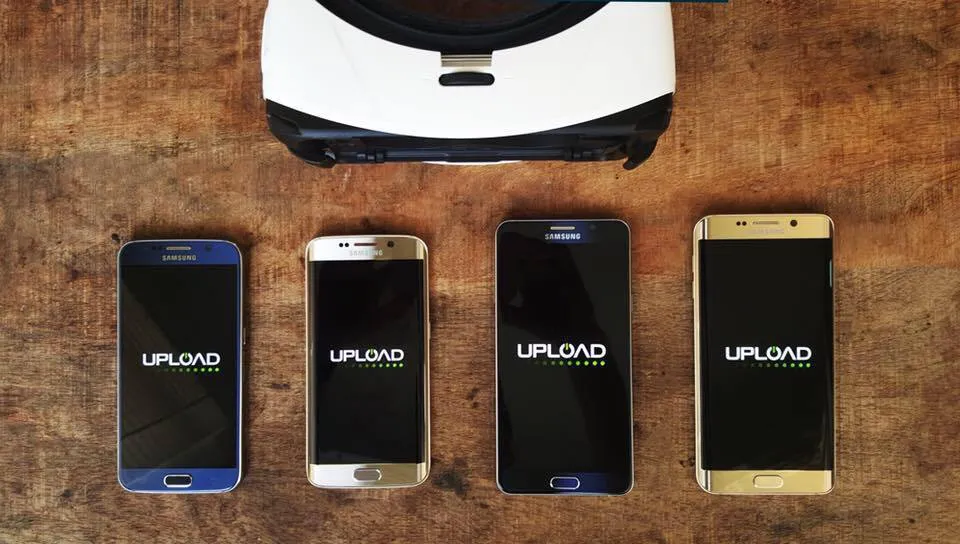The first consumer edition of the Samsung Gear VR is barely back on shelves and the company is already preparing itself for the next generation. Over the weekend, SlashGear released a reported leak of the company’s newest phone the Galaxy S7, including it’s reported specs.
The newest phone appears to have a number of improvements to the display and internal hardware, but does not appear to include a rumored dual camera design on the back – something that Oculus CTO John Carmack has said would help with one of the biggest technical hurdles for mobile VR, positional tracking. Despite this the improvements on the phone signal one that is more ready for VR than the current generation.

Let’s start with the display. The current Samsung Galaxy S6 display is 1440 x 2560 but, according to the report, may improve to a 1440 x 2650 display. This slight increase is likely only be a misinterpretation of the numbers in the original report or simply a typo.
While the display may be the focus for many, it actually is of lesser importance than the increase in the phone’s processing power. The current Samsung Galaxy S6 has a Quad-Core 1.5 GHz Cortex-A53 processor, along with a Mali-T760MP8 GPU. These provide good performance for VR, but a number of apps actually have to scale their resolution down below the phone’s full display capabilities to keep up. That should no longer be the case with the reported Qualcomm Snapdragon 820 and Samsung Exynos 8890 powering the device, both of which offer a significant upgrade in the processing power over the previous generation of chipsets moving from quad-core to octa-core.
Additionally, those of you who are looking to record high-quality playthroughs of your Gear VR action are in luck. The Samsung Galaxy S7 is reported to have 4GB of RAM as opposed to the 3GB with the previous generation. This is the same amount of memory as the company’s larger phones, the S6 Edge+ and the Note 5. Interestingly, John Carmack has said that the most recent mobile SDK includes mobile screen recording, however the feature is currently available only at a development level, with no user facing interface – yet.
Perhaps even more exciting than additional RAM is the reported return of the microSD slot for expanding storage. As someone whose S6 is currently filled to the brim with epic VR content, the ability to increase that storage is welcomed. It is also worth noting however, that the top end model appears to come with only 64GB of internal storage, half of what the previous top end model has.
We don’t expect to have these details confirmed during Samsung’s CES press conference on January 5th. Rather, in accordance with the company’s usual pattern, we expect it to be announced officially at the Mobile World Conference in Feburary with a release likely slated for either March or April. Of course we will keep you posted on any new developments.
These leaked specs should be taken with a grain of salt, as they have not been officially confrimed by Samsung, but here is a full comparison of the S6 and S7 specs:
| Samsung Galaxy S6 | Samsung Galaxy S7 | |
| Dimensions | 5.65 x 2.79 x 0.27-inch | 5.65 x 2.79 x 0.27-inch |
| Display Type | 5.1-inch Super-AMOLED | 5.1-inch Super-AMOLED |
| Display Resolution | 1440 x 2560 | 1440 x 2650* |
| PPI | 577 | 591.37* |
| Processor | Quad-core 1.5 GHz Cortex-A53 & Quad-core 2.1 GHz Cortex-A57; (GPU) Mali-T760MP8 | Qualcomm Snapdragon 820, Samsung Exynos 8890 (octa-core) |
| RAM | 3GB | 4GB |
| Camera | 16 MP (Back); 5 MP (front) | 20 MP (Back); 8 MP (Front) |
| Internal Storage | 32/64/128 GB | 16/32/64 GB |
| Expandable Storage | No | Yes, microSD |
*Reported


























